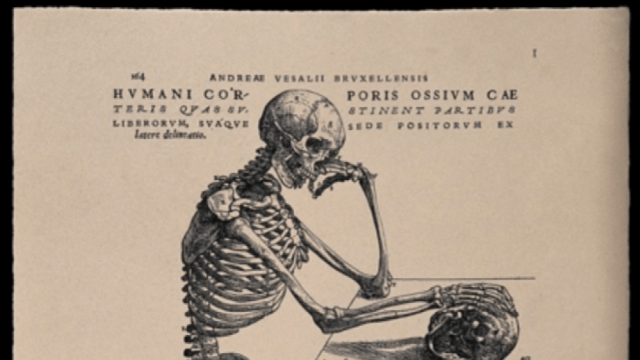
A skeleton, contemplating a skull: lateral view. Photolithograph, 1940, after a woodcut, 1543, Wellcome Collection, London.
Borderline images and how to use them: A visual medical humanities masterclass with Professor Ludmilla Jordanova (Durham University)
Thursday, 6 June 2024
This full-day masterclass with world leading historian of science and medicine, Professor Ludmilla Jordanova, is an opportunity for Honours, Masters and PhD students in Canberra and around Australia to workshop new ideas and share original material that engages with the visual medical humanities, broadly conceived. It is also an opportunity to meet Professor Jordanova and each other.
The masterclass will focus on the use of art, visual and material culture, especially medical and scientific imagery, in the production of history and art history. Topics for discussion include: the art and visual cultures of science and medicine, images of health, disease and disability, medical and scientific collections, portraiture and self-portraiture. Questions around ethical looking, art as evidence, working interdisciplinarily to produce new knowledges about the past, the use of art in history and the use of history in art, and the challenges and rewards of archival research will be addressed.
Participants will be required to bring a piece of writing or a work of art to the masterclass for discussion and workshopping.
This event is free and fully catered, but spaces are limited. If you wish to attend, please send a brief summary of your research project (500 words), along with a short biography (200 words) to keren.hammerschlag@anu.edu.au. The deadline for applications is 8 April 2024.
Grants of up to $500 are available for interstate participants to help circumvent travel costs. If you wish to be considered for a grant, please indicate this in your application, along with a brief statement explaining how the funds would be used.